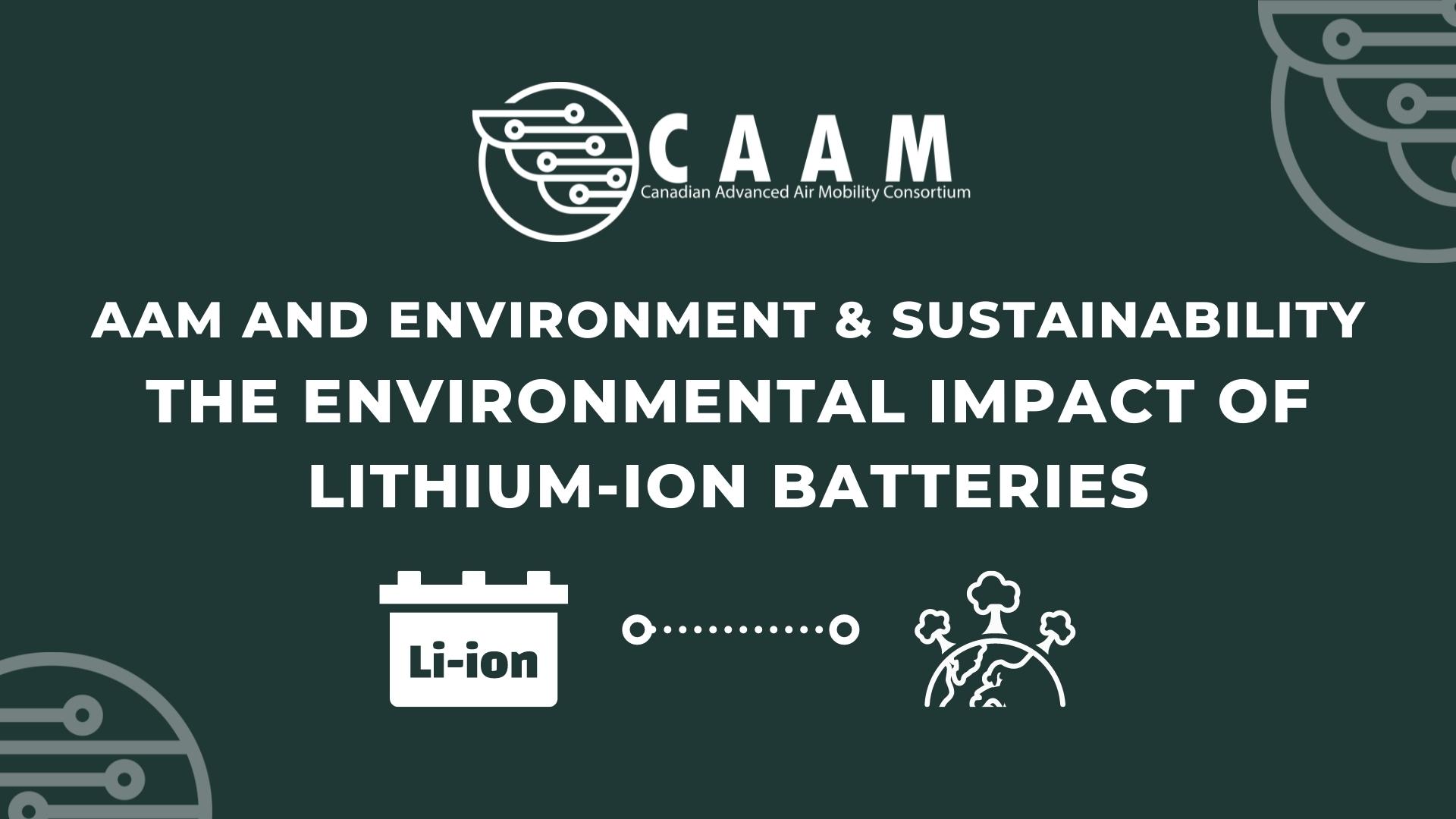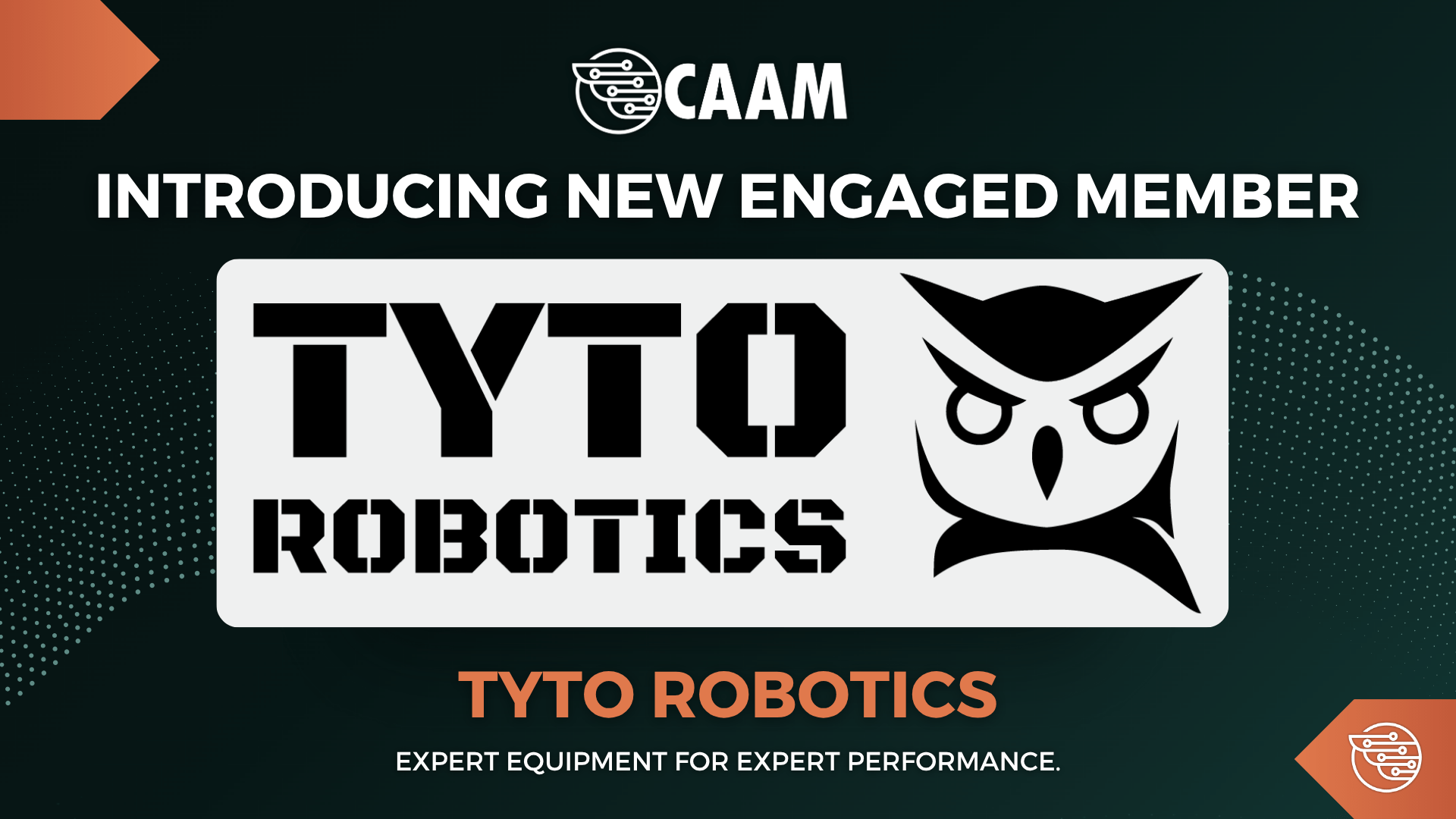 The Canadian Advanced Air Mobility Consortium (CAAM) has an agenda. An environmentally-friendly and sustainable agenda, but an agenda nonetheless. This article is about CAAM confronting reality while trying to find answers on how to lessen the environmental impact of lithium-ion batteries.
The Canadian Advanced Air Mobility Consortium (CAAM) has an agenda. An environmentally-friendly and sustainable agenda, but an agenda nonetheless. This article is about CAAM confronting reality while trying to find answers on how to lessen the environmental impact of lithium-ion batteries.
AAM and Environment & Sustainability: The environmental and social impacts of lithium-ion batteries
Like many other batteries, the lithium-ion cells that power most electric vehicles rely on raw materials — like cobalt, lithium and rare earth elements — that have been linked to grave environmental and human rights concerns. Cobalt has been especially problematic. Mining cobalt produces hazardous tailings and slags that can leach into the environment, and studies have found high exposure in nearby communities, especially among children, to cobalt and other metals. And as much as 70 percent of the world’s cobalt supply is mined in the Democratic Republic of Congo, a substantial proportion in unregulated “artisanal” mines where workers — including many children — dig the metal from the earth using only hand tools at great risk to their health and safety, human rights groups warn.
Hiroko Tabuchi and Brad Plumer, The New York Times, How green are electric vehicles?
And as the High human exposure to cobalt and other metals in Katanga, a mining area of the Democratic Republic of Congo study shows, the impacts of the mining are catastrophic to the nearby population,
This first biomonitoring study of metal exposure in the African Copperbelt reveals a substantial exposure to several metals, especially in children. The urinary Co [cobalt] concentrations found in this population are the highest ever reported for a general population. The pathways of exposure and health significance of these findings need to be further investigated.
Célestin Lubaba Nkulu Banza, Tim S. Nawrot, Vincent Haufroid, Sophie Decrée, Thierry De Putter, Erik Smolders, Benjamin Ilunga Kabyla, Oscar Numbi Luboya, Augustin Ndala Ilunga, Alain Mwanza Mutombo, Benoit Nemery
Does that mean that it’s time to give up batteries and the idea of an electric future? No. But it’s time to start thinking seriously about mitigating the impacts of mining.
AAM and Environment & Sustainability: Possible solutions to the environmental and social impacts of lithium-ion batteries
One way of mitigating the impacts of lithium-ion batteries is recycling,
If current trends for handling these spent batteries hold, most of those batteries may end up in landfills even though Li-ion batteries can be recycled. These popular power packs contain valuable metals and other materials that can be recovered, processed, and reused. But very little recycling goes on today. In Australia, for example, only 2–3% of Li-ion batteries are collected and sent offshore for recycling, according to Naomi J. Boxall, an environmental scientist at Australia’s Commonwealth Scientific and Industrial Research Organisation (CSIRO). The recycling rates in the European Union and the US—less than 5%—aren’t much higher.
Mitch Jacoby, Chemical & Engineering News (C&EN), It’s time to get serious about recycling lithium-ion batteries
The percentages alone are dreadful, but they become even worse when learning that by 2014, the world recycled 99% of all lead-acid batteries. Yes, the batteries are technologically different between them. But this shows a joint agreement on how critical recycling batteries is. But, of course, recycling has its own problems. Battery recycling can also use large amounts of water or emit air pollutants depending on the process used. “The percentage of lithium batteries being recycled is very low, but with time and innovation, that’s going to increase,” said Radenka Maric, professor at the Department of Chemical and Biomolecular Engineering, University of Connecticut.
That’s something important to bear in mind; as Jacoby highlights, only recently have industry and academia started to realize the importance and necessity of recycling lithium-ion batteries,
Until now, most of the effort to improve Li-ion battery recycling has been concentrated in a relatively small number of academic research groups, generally working independently. But things are starting to change. Driven by the enormous quantity of spent Li-ion batteries expected soon from aging electric vehicles and ubiquitous portable electronics, start-up companies are commercializing new battery-recycling technology. And more scientists have started to study the problem, expanding the pool of graduate students and postdocs newly trained in battery recycling. In addition, some battery, manufacturing, and recycling experts have begun forming large, multifaceted collaborations to tackle the impending problem.
Lead-acid batteries have been around for a long time now, while lithium-ion ones are a recent development. So it’s understandable that the focus on recycling has started only now. And the recycling benefits are many; as Jacoby reports,
In many types of Li-ion batteries, the concentrations of these metals [cobalt and nickel], along with those of lithium and manganese, exceed the concentrations in natural ores, making spent batteries akin to highly enriched ore. If those metals can be recovered from used batteries at a large scale and more economically than from natural ore, the price of batteries and electric vehicles should drop. In addition to potential economic benefits, recycling could reduce the quantity of material going into landfills. Cobalt, nickel, manganese, and other metals found in batteries can readily leak from the casing of buried batteries and contaminate soil and groundwater, threatening ecosystems and human health […]. Batteries can have negative environmental effects not just at the end of their lives but also long before they are manufactured. […] more recycling means less mining of virgin material and less of the associated environmental harm.
If recycling is too far down the road, there is at least another option to mitigate the environmental and social impacts of the lithium-ion batteries, repurposing.
As electric vehicles rapidly grow in popularity worldwide, there will soon be a wave of used batteries whose performance is no longer sufficient for vehicles that need reliable acceleration and range. But a new study shows that these batteries could still have a useful and profitable second life as backup storage for grid-scale solar photovoltaic installations, where they could perform for more than a decade in this less demanding role.
David L. Chandler, MIT (Massachusetts Institute of Technology) News Office
Again, although repurposing may seem straightforward, there are challenges, but the results have been encouraging.
Lithium-ion batteries are an environmental and social problem today. But fossil fuels are a problem too. CAAM pushes for an electric future because it understands that batteries can stop being a problem, while fossil fuels will continue to negatively impact the environment.
By Giovani Izidorio Cesconetto



